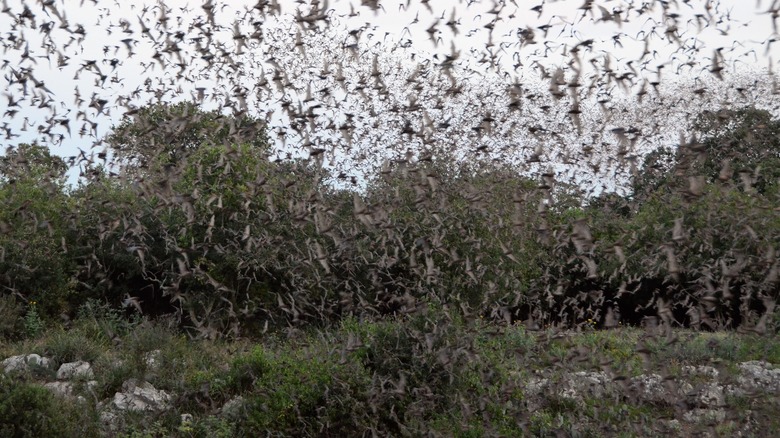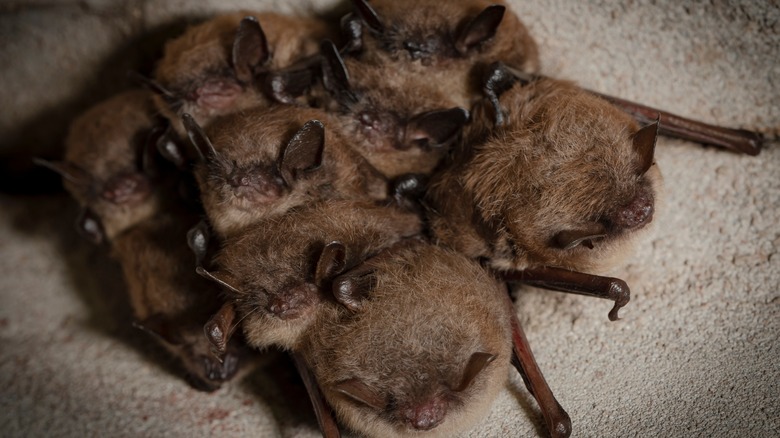Texas' Most Bat-Filled Cave Is Not For The Faint Of Heart
Texas is a huge state with over 800 different types of habitats for local wildlife, including tons of bats. Thirty-two species of bats call Texas their home, which makes up a large portion of the United States' 47 native bat species. The state has many areas dedicated to bat observation, such as the Devil's Sinkhole, a giant sinkhole filled with millions of bats. It's also home to America's largest urban colony of bats in Austin, where travelers and locals can watch the bats in the summer at sunset. Most stunningly, Texas contains the largest colony of bats in the whole world. Bracken Cave Preserve, where this massive colony roosts for half the year, is located just 28 miles northeast of San Antonio and is easy to reach by car. If you have a fear of bats, then Bracken Cave (and Texas in general) may not be the best spot for a summer vacation. On the other hand, other wildlife enthusiasts will enjoy this world-class bat-watching experience.
Bracken Cave Preserve was bought in 1991 by Bat Conservation International to protect the area from being converted into a 3,500-home subdivision. The cave opening is inside a large sinkhole that was formed when the cave's roof collapsed. Bracken Cave became home to over 15 million tiny Mexican free-tailed bats that roost here from March to October. Mexican free-tailed bats are only 4 inches in length and have a wingspan of 12 inches, but their small size allows them to maneuver quickly at speeds of 60 miles per hour. This makes them the best flyers of all bat species, and visitors to Bracken Cave can witness these little daredevil flyers in person.
Visit the Bracken Cave's bats during peak season for a tornado of wings
The best time to visit the bats is in the summer, when the baby bat pups start learning to fly. In June, the mothers each have a single pup and tuck the babies together along the cave walls in clusters. Toward the end of July, the babies practice flying and echolocation, eventually making the treacherous journey from their safe clusters to the wide-open sky. These first journeys are dangerous, and only half of the pups born in this cave manage to survive their first year. The lucky survivors get to seasonally migrate to Mexico before coming back the next year to make more pups.
A few hours before sunset, visitors to Bracken Cave will see millions of bats come pouring out of the sinkhole and take to the sky to eat their body weight's worth of insects. The sound of flapping wings is so loud that it sounds more like rushing water than a cloud of flying mammals. There are several viewing platforms throughout the park where guests can watch the bats take flight, a process that can take over four hours because there are so many.
The Bracken Cave Preserve has more to offer than just the bats. This 1,521-acre preserve is home to a plethora of native Texas species, including the endangered golden-cheeked warbler. There are butterfly gardens, meadows of wildflowers, and plenty of walking paths to casually explore the preserve in the daylight. The area is entirely within the Edwards Aquifer, which provides drinking water to over 2 million Texas residents. The state of Texas also has several other memorable nature spots for tourists to explore, such as the Big Thicket National Preserve, full of cypress trees and diverse wildlife.

